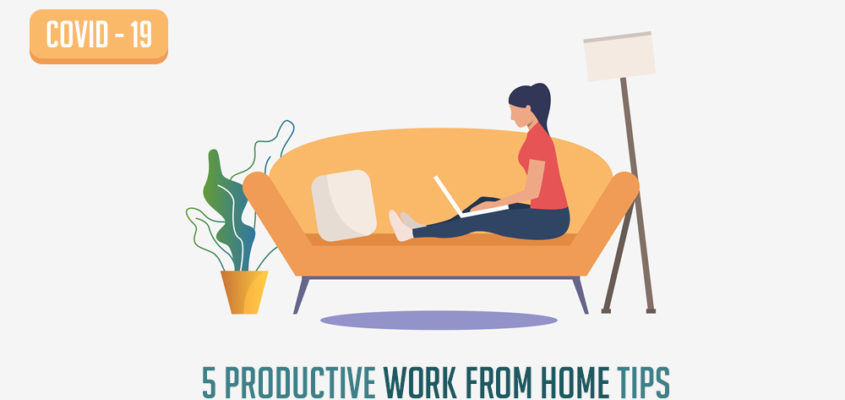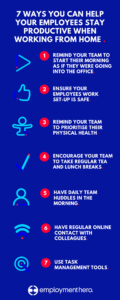
How to work from home along with your partner during the challenging times of coronavirus outbreak?

Work from home along with your partner on a Coronavirus epidemic is quite an exercise for all married men and women to be on a disciplined work mode status.

Neither I switched my job, nor added anyone to my team, yet I have a new co-worker. And I see more than anyone now.
My new co-worker is my husband. There are many people like me in working together with the community. They will be working from their respective home for the foreseeable future. It means that my workday is now happening in the same rooms as and sometimes right next to my husband’s workday. This new reality is teaching us all those things we never knew about our partner’s work-life, tasks and responsibilities.
There are several employees in many industries struggling hard through coronavirus-related shift cuts and layoffs. In this situation, we consider ourselves even luckier to be employed in industries that don’t require in-person attendance.
Eager to establish a sustainable working relationship with my deskmate/wife, I solicited advice from a few dozen people. Some of them have been working at home with their partners for years. And some are like me. They are swiftly learning what works and what doesn’t after getting forced to co-work for the first time. Here’s what experts say how to handle your working days along with your partner.

How to handle your Work from home along with your partner during the Coronavirus outbreak?
- We are all uncomfortable — and that’s OK
When you figure out your partner’s work schedule, you should change your work schedule accordingly. What a day at work looked like in the office hardly resembles what our new lives working from home have turned in to. And, that’s okay, we have to survive this situation. You have to accept reality and act according to that.
It’s completely understandable for many of us to feel like we’re out of our comfort zone. And to experience some ‘growing pains’ as we adjust to our new reality (for the time being). It makes it incredibly important to work as a team, directing your energy as a couple towards the common enemy (COVID19 related changes).
Having a morning meeting to discuss the plan for the day can be a simple way to alleviate some of the discomforts we are all feeling.
- Social distancing applies to your partner, too
It is crucial to have your own working space away from your partner if possible. Once you establish separate areas, it’s also necessary that couples respect the boundaries of that space during the workday. Creating baseline rules around when and how to interrupt each other during the day can go a long way to help preserve sanity as well. Also, while it may be tempting to take breaks together during the workday, taking breaks alone may be just as essential to maintaining sanity.
Distancing your work life from your home life as the spaces you are doing both become one is also important.
- Communicate, communicate, communicate. And then communicate again.
Ensure to do the best to avoid miscommunications about expectations while living in isolation. In this uncertain time, you can collaborate on a daily schedule that outlines both personal and professional obligations. Including things like outdoor activity and exercise is an excellent place to start. It gets everyone on the same page for how the workday will look different now that a commute into the office isn’t on the table.
It’s also necessary for couples to reconsider “who does what” during this time. For example, just because your partner was the one who did a majority of the cooking before the pandemic, re-evaluating those responsibilities will be key to staying productive during it.
- Give your partner some grace
Becoming more empathetic during this time may be the answer to a lot of the anxiety we are feeling. That especially applies to the person you are partnering with to get through the pandemic. Now more than ever, it is significant that we work together and practice ‘we ‘ rather than ‘me.’ With teamwork, we can manage this challenge and even come out stronger and better than we ever imagined.”
Give yourself and your partner some grace. These are unprecedented times, and we’re all dealing with a range of emotions about the current state of affairs. Be patient with your partner and yourself. And just remember that you are both doing the best you can, and these arrangements won’t last forever.
Bringing a bit of workplace like structure into the home can feel unnatural. But it still might help you keep yourself and your partner sane as you adjust to a new routine. Once you get adapted to your new normal, you will both be sighing with relief. And buy a new headphone. It won’t let you even hear each other.

How Businesses Should Handle the Coronavirus Outbreak

How Businesses Should Handle the Coronavirus pneumonia outbreak.Challenges for business in handling coronavirus epidemic or pandemic.

Corona – the deadly disease has arrived in many offices and employers around the world. The number is still increasing after every passing day. Around 93,526 coronavirus infection cases have been reported. It is far outpacing the SARS epidemic in the early 2000s. About 81 countries and territories around the world got affected, and 51,019 people only got recovered till now.
The daily reported cases outside of china have gone up considerably. Italy, South Korea and Iran are emerging as new hotbeds.
With coronavirus continuing to spread across the world, we have put together a handy guide. It is on the best practices companies, and human resources departments should follow to help their employees stay healthy and infection-free.
How Businesses Should Handle the Coronavirus Outbreak to ensure employees stay healthy and infection-free

- Effective Communication is Key
HR departments should pull together every information about the coronavirus to create a ready-to-refer instructional guide for employees. It not only educates them about the infection but also enlists the ideal ways to avoid it.
The communication strategy must be multi-pronged. You should use all channels of communication available to make the employees aware. You can use bulletin boards, stick posters on the wall, infographics, emails, videos, and any mode of media that could help to communicate the message to all employees effectively
The gathered information should only be from credible and verified sources. You can refer useful online pages, the CDC website, and reputable news outlets that attribute their knowledge to either statement made by governmental agencies, or health professionals engaged in the virus researching.
Execute Flexible Working Arrangement Plans or BCP Protocols. It is essential for the countries that share a border with China or have multiple reported cases of coronavirus infection. Allowing employees to work from home is a great way to prevent contamination, given that human-to-human transmission is possible.
By implementing flexible working arrangements, you can eliminate the possibility of transmission at the office and also during the commute. It is the best solution to help people in densely populated cities or packed urban areas to stay away from the disease. Employees can use chat platforms, project management dashboards and other platforms that are online or on the cloud.
It might not be possible for work that is location-dependent, though. Still, the CDC and WHO websites have laid out ways to avoid viral infections. They are implementing non-invasive approaches like face masks, alcohol-based hand sanitisers, and maintaining good personal hygiene.
- Reconsider employees Leave Policies
The last thing a company wants is an infected employee to turn up to work as they have no enough paid time off left. That not only hurts the sick worker who has to stress himself out to get to work, but also their colleague, as well as everyone and everything they encounter and touch on the way.
When a company is result-driven, no matter whether the employee work from home or in the office. You just need to ensure the work is getting delivered on time. As we have plenty of developments in today’s technology, there is a suite of solutions for companies to conduct meetings, discussions, and day-to-day work can go as usual.
For employees that are being sick, or start feeling ill during the day, especially those who are travelling, calling and notifying health authorities should be a priority. Fear mongering and forcing the sick employee into isolation, against their will, must be avoided at any costs until advised by the medical authority.
- Using technology to avoid human contact might not be a bad thing.
Platforms that let teams collaborate and communicate efficiently can be used during work-from-home days. Meetings can get done over Google Hangouts, Skype, or Zoom, while real-time collaborations can do using free platforms like Collabedit.
Other HR Initiatives, apart from providing free masks, and hand wash sanitisers, the cleaning schedule of the workspace can be increased.
- Senior management should make sure they mask up wherever appropriate to.
Temperature taking could be incorporated so that everyone in the workspace would have peace of mind and not be paranoid that their colleagues may get infected. Such information should be openly available so that workers have complete trust in the information provided.
Lastly, lunch could be catered to minimize employees’ exposure to crowded areas like the food centre.
The Corona crisis has now reached a new critical phase, and we need to take proper measures to take adequate care of ourselves and our family. Follow the above handy guide on best practices companies and human resources departments should deploy, and you’re your employees avoid exposure to the new virus strain.






